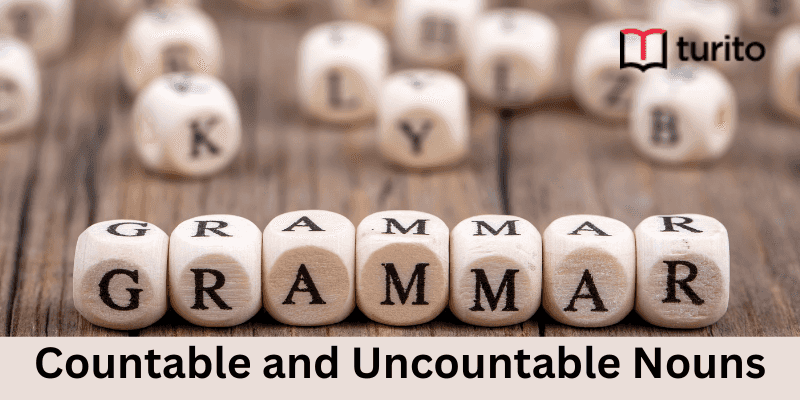Countable Nouns
Countable nouns are those words which can be counted using numbers.
It can be people, places, and things.
For example:
- Books
- Buildings
- Pens
These nouns have singular and plural forms.
We can add ‘a’ or ‘an’ before countable nouns in singular form.
For Example:
- A Book

- An Apple

Nouns that are singular can be changed to plural by adding ‘s’ at the end of the noun, in most cases.
For Example:
- Car – Cars

For some nouns, the plurals take an entirely different form.
For Example:
- Child – Children
For plural form, we can ask ‘how many’ and the answer will be a number.
For Example:
- 3 books
- 5 pens
Uncountable Nouns
Uncountable nouns stand for words which cannot be counted with numbers.
They are usually concepts, ideas or physical objects.
For Example:
- Happiness
- Milk
- Advice
- Hair
We won’t say ‘a happiness’ or 2 happiness. The quantity of uncountable nouns can be known by asking the question ‘how much.’
They don’t have plural form.
‘A’ or ‘an’ is not added before uncountable nouns. We cannot use numbers directly before nouns.
- We cannot say 2 milk but we can say 2 bottles of milk.
Using countable and uncountable nouns
The listed articles and adjectives can be used with both countable and uncountable nouns, whereas some can be used only with countable and certain others only with uncountable nouns.

Using a, an, some and any
Nouns that begin with a vowel sound (a, e, i, o, u) with singular countable nouns, an is used.
Nouns that begin with a consonant sound (not vowel sounds) with singular countable nouns, a is used.
- Some is used with plural countable nouns and uncountable nouns. It is used in positive statements.
- Any is used with plural uncountable nouns and countable nouns. It is used in negative sentences and questions.
Using verbs with countable and uncountable nouns
Countable nouns can be singular or plural. So, they may take singular or plural verbs.
For Example:
- The girl is dancing.

- The girls are dancing.

Uncountable nouns have only singular form, so singular verbs are used with them.
For Example:
- His luggage is heavy.
- The furniture in this room is new.

Related topics
Exploring the World of Adjectives: Types, Usage, and Examples
What are Parts of Speech? Parts of speech determine words’ grammatical and semantic position in a sentence. Activity time The parts of speech are nouns, adverbs, conjunctions, pronouns, interjections, adjectives, articles, prepositions, and verbs. Identify the parts of speech of the underlined words in the following sentences. White- Adjective Big- Adjective Exciting- Adjectives New- […]
Read More >>Memoir Writing: Basic Elements, Structures, and Types
Memoir: A memoir is a narrative written from an author’s perspective about a particular facet of his/her own life. ‘Memoir’ word comes from the French word ‘memoire’, which means ‘memory’ or ‘reminiscence’. Example Night: Elie Wiesel gives an account of how he survived his teenage years at Auschwitz and Buchenwald concentration camps during World War […]
Read More >>Identification of Main Idea in Fiction and Non-fiction
Every story or paragraph or non-fictional text has at least one main idea. The MAIN IDEA is what the text is mostly about. (It is backed up or supported by SUPPORTING DETAILS) Before discussing how to find the main idea, we shall first look at TOPIC. Can you define a topic? A topic can be […]
Read More >>Writing an Article: Structure and Essential Tips
What is an article? Structure of Article Writing : Title : Draw the attention of readers with an attractive title and indicate the main topic of the article Introduction : Attract the reader’s attention with a sentence that gives a general presentation of the topic. Main Body : Between these sentences, the body should do […]
Read More >>Other topics











Comments: